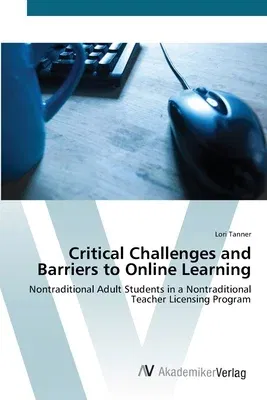Revision with unchanged content. Older adult students are drawn to
distance education because of the need to balance career, family, and
continuing education responsibilities conveniently, effectively, and
efficiently. When contemporary technologies are integrated into the
educational environment, the lack of familiarity with these tools
creates barriers to learning. With teacher shortages in certain fields,
distance education may address this crisis. This book offers
recommendations for implementing online teaching training for
nontraditional students. They must have clear paths of communication
available especially when social inclusion is limited by the online
format; learning new pedagogy is secondary until a level of technology
competency has been reached; the adult students will commit to learning
when the goals and objectives are applicable and practical to their
personal and professional needs; these nontraditional adult students
have competing priorities and struggle with balancing family
responsibilities, job obligations, and commitment to the program; this
is only exacerbated by the state, university, and program assessment
demands required. The book targets teacher educators and educational
researchers.


